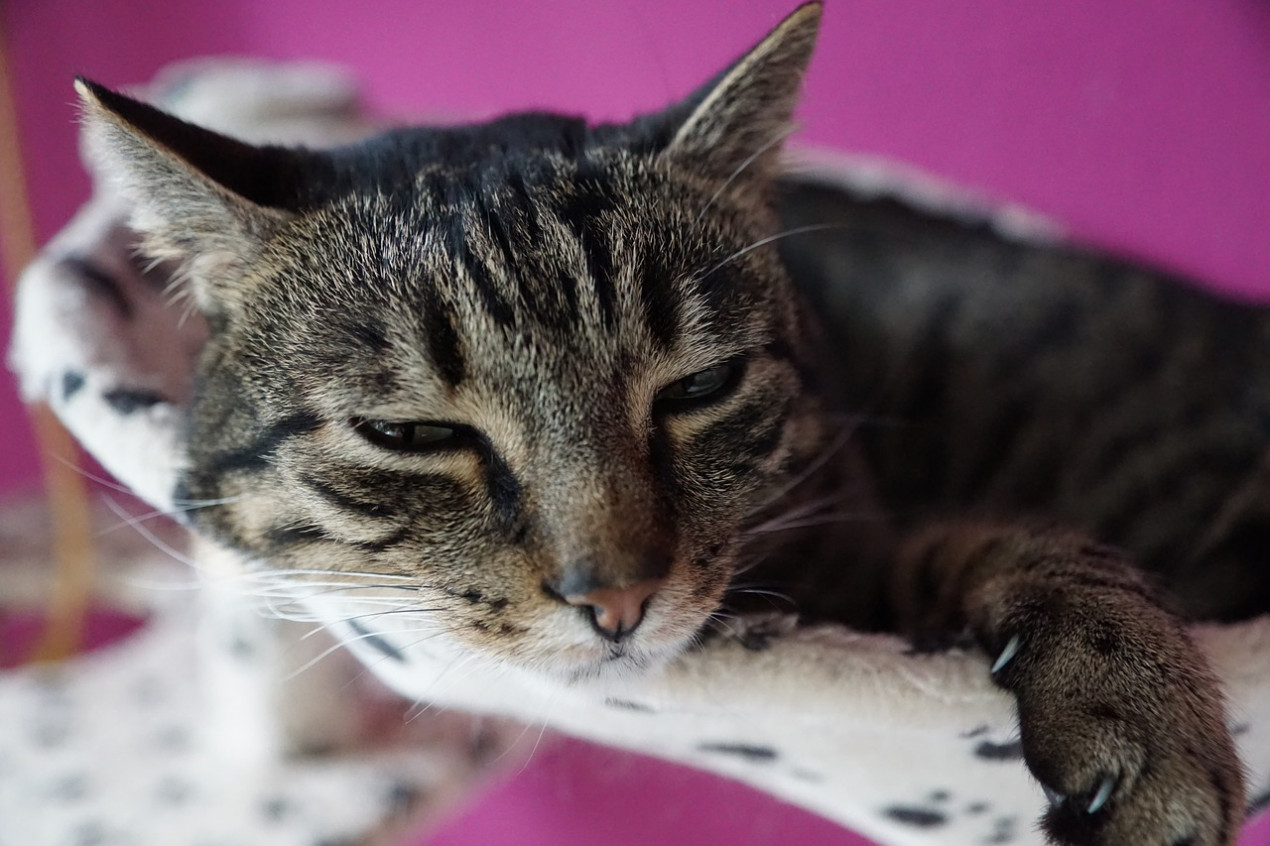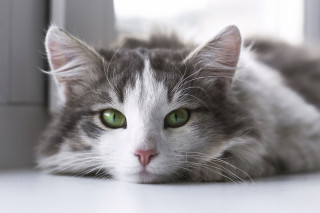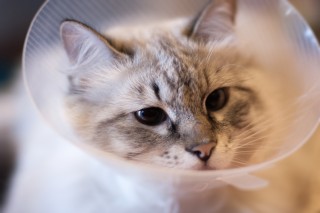We're here to help

What is cat flu?
Cat flu, also known as feline respiratory disease, is a little like a human cold in terms of symptoms. It’s very common in cats and kittens and is usually caused by either the feline herpes virus (FHV) or feline calicivirus (FCV).
The virus is present in saliva, tears and nasal secretions and spread through contact between cats.
What to do if your cat or kitten has cat flu?
Cat flu can be life-threatening if left untreated, particularly in kittens, older cats and cats with underlying illnesses. You should contact your vet straight away if your cat or kitten is showing signs of the disease as it can lead to blindness or permanently damaged eyes, pneumonia and long-term damage to the nasal passages and sinuses. If you’re worried your cat has any of these advanced manifestations of the illness, and it’s out of hours, call your nearest Vets Now pet emergency clinic or 24/7 hospital.

What are the signs of cat flu?
Signs of cat flu can include cat sneezing, a runny nose, sore eyes, dribbling, subdued behaviour, loss of appetite, eye and mouth ulcers and a cough. While it can affect cats of all ages, it tends to be particularly severe in kittens.
What causes cat flu?
It’s estimated around 80% of cases are caused by either the FHV or FCV viruses. Infection with both of these can occur at the same time. But there are also other causes, such as the bacteria chlamydophila felis, and bordetella, which causes kennel cough in dogs. Bordetella has a relatively high death rate in kittens. Cats can be vaccinated against feline respiratory disease although the vaccine routinely used in the UK is only active against the viral forms.
How is cat flu diagnosed?
Your vet should be able to give you a provisional diagnosis based on your cat’s symptoms. But to make a definitive diagnosis, they may need to take blood samples as well as swabs from your cat’s nose or mouth and send them to a laboratory for tests. Here the virus or bacteria can be isolated and identified. Diagnosis can be trickier when a cat has more than one infection or just the feline herpes virus as it’s only shed from time to time.

You might also be interested in:
Cat flu treatment
There’s no cure for this illness, and as it’s usually caused by a viral infection, it can be challenging to treat. If your pet’s symptoms are not life-threatening, it’s likely your vet will prescribe good nursing care – similar to what a human with a bad cold would receive – and direct treatment towards the symptoms of the illness. This may include prescribing antihistamines, nose drops, nebulising mist and eye ointment. These should help remove hard secretions from your cat’s nose, eyes and mouth which can stop them from eating and drinking, leading to dehydration.
It’s worth bearing in mind that infectious cats with mild symptoms are rarely hospitalised because of the risk to other cats, so nursing care is usually done at home. You should also note that antibiotics won’t stop either the feline herpes virus or calicivirus so will only be prescribed if your cat has a bacterial infection.
Your cat will need urgent emergency treatment if their symptoms are more serious or if they’ve developed pneumonia. In cases like this, treatment may involve providing oxygen to help them breathe and delivering fluids via a drip.
Can kittens get cat flu?
Flu in cats, or kitten flu as it’s often termed, is more common in kittens than in adult cats as kittens often become infected before the vaccine has had a chance to be effective. While very young kittens will get some immunity from their mother, this doesn’t normally last long. It’s also possible for pregnant cats infected with flu to infect their offspring. In addition to those listed above, kitten flu symptoms can also include lameness and a high temperature.
My cat is sneezing, is it cat flu?
Cat sneezing can be triggered by anything that irritates your cat’s nose, such as cigarette smoke, air freshener, or allergies. If the sneezing isn’t accompanied by other cat flu symptoms, such as runny nose and eyes, then these other irritants could be to blame. However, if you’re unsure, it’s always best to seek advice from your vet.

Is cat flu contagious to humans?
No, there have been no reported cases of cat flu in humans, therefore there is no known risk to humans from the feline herpes virus or feline calicivirus.
How can I prevent my cat catching flu?
The best way to protect your cat against this illness is to ensure they are vaccinated and control environmental factors, such as contact with infected cats, overcrowding, and stress.
What is the cat flu recovery time?
Cats who have picked up the feline herpes virus will typically display symptoms for five to 10 days in milder cases and up to six weeks in more severe cases. Cats with the herpes virus can suffer ongoing health problems and are also more susceptible to secondary bacterial infections. It’s worth noting that cats with FHV are infected for life.
Feline respiratory disease caused by feline calicivirus is usually milder than the feline herpes form of the disease. However, there are lots of strains of calicivirus, and some are more serious than others. In some cases, cats may show few or no signs while in others they can develop pneumonia and painful ulcers in the mouth and nose. In contrast to FHV, cats diagnosed with FCV are usually able to clear the infection within a few weeks or months.
Is there a cat flu vaccine?
Yes, there is a vaccine which protects against most viral strains of flu. Our advice is to vaccinate your kitten against the disease as early as possible as this is the most effective way of reducing the risk of it spreading. Cats can be vaccinated from as early as eight weeks. There are also vaccines against the bacterial forms of the illness although they are not usually given on a routine basis. You should discuss this with your daytime vet.
Be aware that flu vaccines are not always 100% effective and even vaccinated cats can become carriers of the disease without showing any symptoms. This leaves them at risk of infecting other cats.

